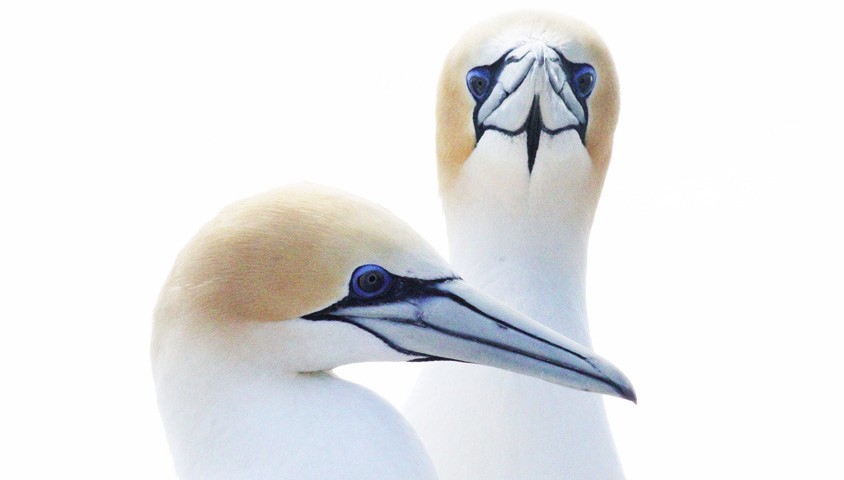Attaching cameras directly to study subjects has become increasingly common in zoological research initiatives, but it is only with the more recent proliferation in miniature action cameras that avian carriers have been involved.
A prime example was recently performed by Deakin University researchers enquiring into the foraging behaviour of the Australasian gannet (Morus serrator).
Melanie Wells, who completed the study as her Honours thesis project, recorded bird behaviour at two different marine environments to ascertain if different hunting strategies were being employed. Cameras were attached to gannets at Popes Eye Marine Reserve in Port Phillip Bay, as well as at Point Danger just outside Portland.

Researcher Melanie Wells spent a lot of time getting ‘up close and personal’ with her study subjects.
“Our footage gave a unique insight into the behaviour of Australasian gannets, revealing previously unknown information about their foraging behaviour and, importantly, showed they can adapt their hunting strategies to suit available resources and environmental conditions,” Wells said.
Among the results of her research, Wells discovered previously undescribed hunting behaviour that appeared to be gender-specific.
The Solitary Male Hunters of Popes Eye
According to the video footage captured by the birds at Point Danger, all observed individuals fed offshore on small schooling fish with other gannets and often in association with other hunting predators like dolphins and seals.
“Our cameras showed the birds could swim underwater to capture several small fish per dive. This behaviour is common for gannet species around the world.”
But for the gannets at Popes Eye, a different hunting strategy was being employed.
“There, half of the study birds hunted in the same way in Bass Strait, but the other half hunted within Port Phillip Bay and were observed to be foraging alone,” Wells said.
“Interestingly, 93 per cent of birds feeding in the bay were male.”
Footage indicates these individuals were scanning shallow sandbanks for food, so the gannets were potentially spotting the silhouettes of larger fish against the sea floor. The strategy would usually result in a single, large catch, rather than several small ones.
“This study has helped us understand the diversity of behaviours, and the influence of gender and environment, when it comes to searching for food in this species.”
The Importance of a Bird’s Eye View
These gannets, which are known to fly up to 500 kilometres per day at an average speed of 70 kilometres per hour, have also been known to accidentally kill themselves when diving for food.
Yet their feeding behaviours are of interest as more than just a novelty – research like this may actually provide some insight into the resilience of the birds’ local ecosystem.
Research supervisor for the project, Deakin marine scientist Associate Professor John Arnould said that seabirds like the gannets used for the study are sensitive to environmental variability and so make for good indicators of ecosystem health.
“Determining the suite of behaviours animals have in relation to normal environmental variability is crucial for being able to predict how they may respond to future changes.
“The results of this study demonstrate strong behavioural variability in Australasian gannets which suggests plasticity in foraging behaviours, essential in the response and adaptation to environmental change.”
Arnould has also indicated that he intends to conduct further research in the area of foraging specialisation in order to learn more about the degree and consistency of the behaviour and how it may impact breeding success.




